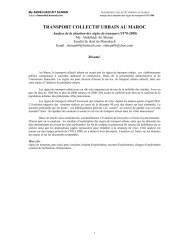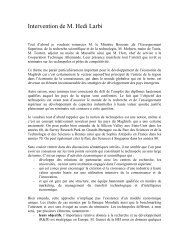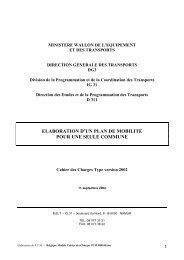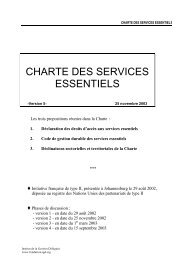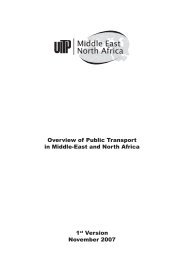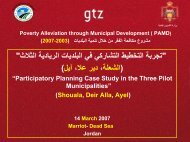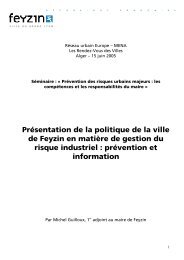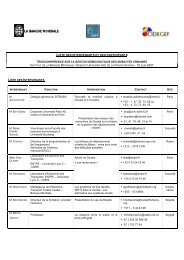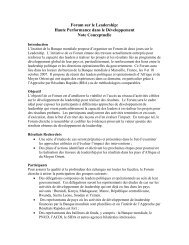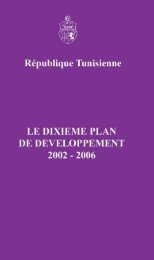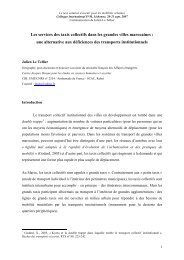Modélisation de la Demande en Transport Urbain ... - Euromedina
Modélisation de la Demande en Transport Urbain ... - Euromedina
Modélisation de la Demande en Transport Urbain ... - Euromedina
- No tags were found...
You also want an ePaper? Increase the reach of your titles
YUMPU automatically turns print PDFs into web optimized ePapers that Google loves.
Problème : Modèled’é<strong>la</strong>sticité• Groupe A – faible interaction• Modèle analogique, é<strong>la</strong>sticité• Exemple <strong>de</strong> <strong>la</strong> modification du tracé d’une ligne <strong>de</strong>bus faiblem<strong>en</strong>t connectée e au reste du réseau. r• Questions : que se passe-t-il si <strong>la</strong> fréqu<strong>en</strong>ce d’une dligne <strong>de</strong> bus augm<strong>en</strong>te <strong>de</strong> 10 %?, ou si les tarifsaugm<strong>en</strong>t<strong>en</strong>t <strong>de</strong> 3 %?• Utiliser le modèle mathématique matique (coeffici<strong>en</strong>tsd’é<strong>la</strong>sticité) Fin du Chapitre 1 (Mod(Modélisation etP<strong>la</strong>nification).EHTP : Dr M. El HamlyModélisation <strong>de</strong> <strong>la</strong> Deman<strong>de</strong> <strong>en</strong> <strong>Transport</strong><strong>Urbain</strong>30



